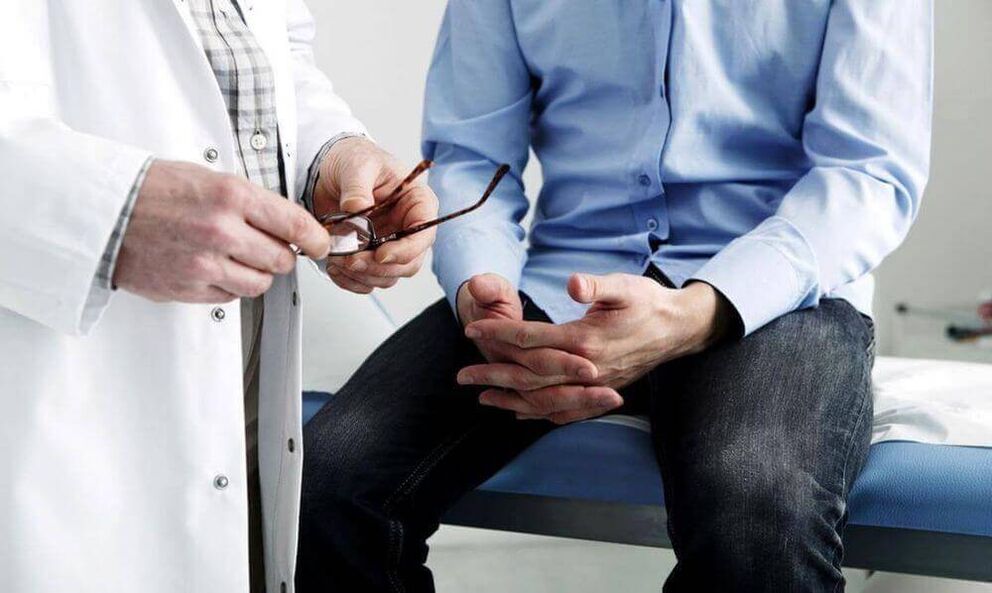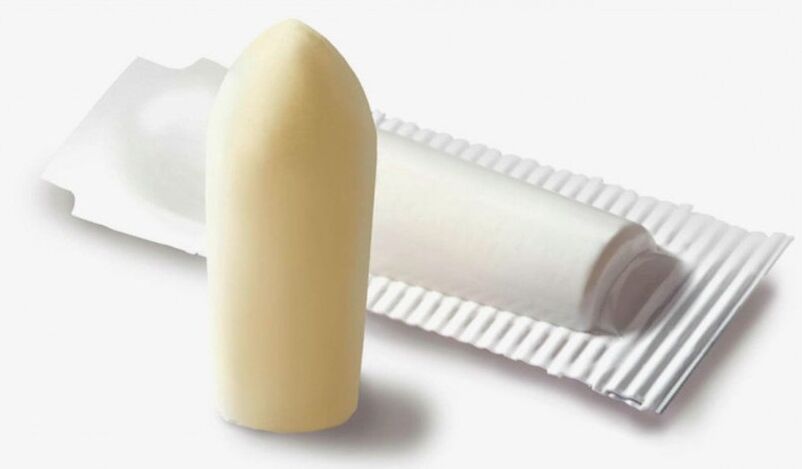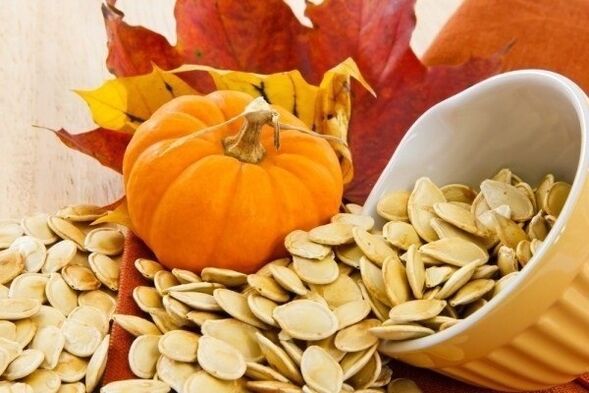Prostatitis is characterized as inflammation of the tissues of the prostate gland, arising from the development of congestion in it.
In the modern world, it is the most common urological disease among men of all ages. According to statistics, after the age of 30 years, prostatitis covers 30% of the male population, after 40 - 40%, after 50 - 50% and so on in ascending order.
However, taking into account the peculiarities of the diagnosis and the possibility of the course of the disease in a latent form, the actual figure is much higher.

Reasons for development
Currently, the causes of the development of prostatitis are divided into two major groups:
- Infectious - (sexually transmitted infections (penetration into prostate tissue of the causative agent - microbes, viruses, bacteria, fungi, etc. ): also the presence of focal chronic infections (chronic tonsillitis, sinusitis, renal pathology), surgery on pelvic organs and others).
- Non -infectious (stagnant) (decreased immunity, hypothermia, decreased physical activity, inactive lifestyle, prolonged sexual abstinence and conversely excessive sexual activity, alcohol abuse, etc. ).
The development of prostatitis is facilitated by injury, impaired blood and lymph circulation in the pelvic organs, hormonal disorders (absolute or relative androgen deficiency).
Therefore, it is emphasized that the isolated entry of pathogens into organ tissues is not always and may not necessarily be the cause of disease progression. The most frequently identified pathogen was Escherichia coli (86%), followed by Klebsiella, Proteus, Enterococci, Pseudomonas aeruginosa. With regard to streptococci, staphylococci, chlamydia, mycoplasma, ureaplasma, the opinion of researchers about their importance in the development of different diseases. It is very rare that certain pathogens (pale treponema, Koch bacillus, etc. ) become the cause of prostatitis.
Welding
Currently, the international classification of prostatitis has been adopted, which is the most complete and covers all types of inflammation:
- Category I. Acute prostatitis;
- Category II. Chronic bacterial prostatitis;
- Category III. Non -Bacterial Chronic Prostatitis / Chronic Pelvic Pain Syndrome - a disease in which no infection is detected that lasts more than 3 months;
- Subcategory III A. Chronic inflammatory pelvic pain syndrome (leukocytes are determined in the secretory of the prostate);
- Subcategory III B. Chronic non -inflammatory pelvic pain syndrome (no leukocytes in prostate secretion);
- Category IV. Chronic prostatitis without symptoms (leukocytes are present in the secretions of the prostate, the patient does not complain, the disease is detected by chance).
The first signs
The main signs of acute prostatitis are an increase in body temperature and frequent urination, which is accompanied by cramps and weak pressure. In addition, signs of prostatitis include a burning sensation in the perineum and pain in the rectum during bowel movements. At the stage of purulent inflammation, spontaneous opening of the abscess and outflow of pus from the urethra or rectum are possible.
Symptoms of the chronic form are burning in the urethra and perineum, discharge of pus at the end of defecation or urination, increased fatigue and irritation of the body.
Difficulty urinating with prostatitis is very dangerous, which, in the absence of timely treatment, can lead to acute urinary retention. Men should not ignore the indirect signs of the development of prostatitis as a complete or partial decrease in libido, accelerated ejaculation, sometimes painful, prolonged erections at night. All these symptoms are characteristic of inflammation of the prostate gland, as well as in an uncomplicated stage and can receive adequate treatment.
symptoms
If acute prostatitis is impossible not to notice, then in chronic prostatitis many do not see certain symptoms or do not attach special importance to them.
Let's list the main symptoms of prostatitis in men:
- Urinary problems. Due to the narrowing of the urethra, the jet may become moist, thin, or intermittent. To empty, the patient has to make an effort, which should not be normal. Sometimes urine needs to be squeezed drop by drop, especially in the early stages of the act of urination. Painful sensations often occur. Many patients have a frequent urge to urinate (especially at night), this is due to irritation of the nerve endings. Even after going to the toilet, many feel that the bladder is not completely emptied, this is due to enlarged prostate and bladder squeezing. In severe cases, accidental urine leakage or incontinence may occur.
- Painful sensation. As a rule, they are localized in the perineum, pubis or testicles, in the groin or in the lumbar region. Pain can occur suddenly and pass quickly, often they are quite strong, but more often there is a dull or painful character.
- Sexual problems will definitely arise. First, libido will decrease significantly. Second, erection problems may occur. Third, due to ejaculation problems (ejaculation), the average duration of intercourse will change: it may be short due to early ejaculation or, conversely, too long due to delayed ejaculation. Fourth, the sensation will also change, because the orgasm will not be bright. Fifth, the amount of semen will be significantly reduced (only a few drops can be removed, which is not normal).
- Another characteristic symptom is problems with conception. If a man is planning a child, then with prostatitis, fertilization becomes impossible due to inability or insufficient sperm mobility.
- Discharge from the urethra. They are usually white and slimy in texture and most commonly occur in the morning.
- In the acute course, there is an increase in body temperature (up to 38-39 °), fever, deterioration in general condition, weakness, malaise and other similar manifestations. Symptoms of such prostatitis usually appear suddenly, without any preconditions.
In addition, many have psychological problems related to the symptoms listed above. A man may become insecure, his self -esteem will be greatly reduced, he will be depressed or irritable and nervous. Many representatives of the stronger sex are embarrassed by such a complicated problem and do not consider it necessary to discuss it, keeping everything to themselves. And this puts a lot of stress on the psyche, changes behavior and in some cases can lead to depression or nervous disorders.
Chronic prostatitis
Many men do not pay much attention to the manifestations of prostatitis in the early stages. This is a painful sensation that does not bother in the bladder area, a frequent desire to go to the toilet. Violations of normal ejaculation and erections are associated with stronger sex with age and not in a hurry to see a doctor. Such frivolity leads to the development of chronic prostatitis.
Therefore, we list the common symptoms of various forms of chronic prostatitis:
- Discomfort and sores in the urethra during urination or sexual intercourse, small serous-purulent discharge from the urethra (especially after prolonged urinary retention).
- Moderate discomfort and / or pain in the form of "pain" and heaviness in the perineum area, arising or worsening after drinking alcohol, physical activity, sexual intercourse. Sometimes they are temporarily paroxysmal.
- Decreased ability to fertilize, caused by increased acidity of secretions, decreased or lack of motility of sperm, and their agglomeration (adhesion) by their heads.
- Frequent sudden urge to urinate (sometimes up to 3 times in 1 hour) and a feeling of insufficient emptying of the bladder, explained by a violation of the regulation of the prostate nerve, muscle fibers and bladder.
- Pain during orgasm or vague sensation of orgasm, ejaculatory disorders, expressed in premature or, conversely, during periods of excessive sexual intercourse. This phenomenon is associated with inflammatory processes in the area of the seminal tubercle or scarring due to inflammation.
To diagnose the disease, you need to see a urologist. With the help of tests, the doctor makes a diagnosis and prescribes a course of drug treatment.
Diagnostics
To make an accurate diagnosis, a man needs to be examined by a doctor and tested. With prostatitis, patients experience pain as a result of palpation in the perineum area. Internal palpation of the rectum indicates the presence of swelling in the area of the prostate gland, it becomes dense when touched. The patient complained of problems with the genitourinary system. After collecting anamnesis, the patient should pass a detailed blood test for the presence of excess protein, increased number of leukocytes and prostate antigens.
To exclude infection, the patient must pass a smear from the urethra. The lab will inject the identified bacteria and test their sensitivity to certain types of antibiotic agents. For an accurate picture, ultrasound examination of the pelvic organs is performed. It clearly indicates inflammation and enlargement of the prostate. If the gland has grown strongly, then on ultrasound you can see the presence of residual urine in the bladder.
After all tests and exams are passed, the man will be fully diagnosed and given treatment.
Drugs for the treatment of prostatitis in men: a list
Complex treatment for prostatitis of various types may include a combination of the following methods:
- immunocorrective therapy;
- antibiotic therapy;
- hormone therapy;
- various physiotherapy procedures;
- prostate massage;
- lifestyle change;
- surgical intervention, etc.
Treatment of prostatitis with medications includes a variety of medications, including antibiotics:
- alpha blockers;
- hormone medication;
- muscle relaxants;
- immunomodulator;
- rectal suppositories;
- antibacterial drugs.
When treating with antibiotics, preference is given to fluoroquinols and macrolides, as they can accumulate in the required concentration in prostate tissue.
- Fluoroquinols.
- Macrolide.
- Less commonly used: penicillin, cephalosporins, tetracycline.
Prostate sequence
The prostate sequence showed good results. The glands receive a complex effect. First of all, it becomes possible to remove from the body of inflammatory secretions that have accumulated in the prostate (they are removed during massage). Improving blood circulation through this manipulation allows you to deal with all kinds of stagnation, and also contributes to the good penetration of antibiotics into the glandular tissue.

A set of exercises
Exercises for the prostate:
- Certainly not a difficult exercise to use for both treatment and prevention. It consists of squeezing and relaxing the anal muscles. These muscles are responsible for holding the flow during urination. Try to contract and open up muscle groups. This will increase blood flow to the glandular area.
- Use a contrast shower to increase circulation. To do this, direct the flow of water to the perineum. First, 30 seconds of very warm water, then 10 seconds of cold.
- If there are no acute symptoms, you can massage yourself. This is done to smooth the blood flow. Exercise should be done while lying down. The point for the massage is the gap between the anus and the scrotum. The pressure should be firm, but not aggressive. Time is 3-5 minutes.
Be sure to check with your doctor before exercising. Sometimes its use is absolutely unacceptable.
Immune correction
Decreased immunity has a negative impact on health.
It is this factor that is one of the foundations in the development of the disease and its worsening. Long -term courses of taking antibiotics, which are mandatory for chronic prostatitis, also reduce the body’s defenses. Therefore, patients are recommended to consult an immunologist to select a strategy for performing immunocorrection.
Physiotherapy
Physiotherapy for chronic prostatitis aims to activate blood circulation.
For this purpose, patients are exposed to lasers, ultrasound, and magnetic vibrations are used. In some cases, this procedure is replaced with a warm medical enema, which is always given to the patient. Recommend sitting baths, mud treatments, mineral water.
Candles
All suppositories for the treatment of prostatitis have one of the properties: relieve pain (non -steroidal drugs), relieve cramps (based on papaverine), eliminate the inflammatory process (contain antibiotics).

Alternative methods of treating prostatitis
Treatment of prostatitis at home is carried out only with uncomplicated forms or chronic relapses. Traditional methods can increase the body’s resistance to infection and relieve pain.
- Pumpkin seeds have long been used by healers in the treatment of prostatitis. They are a good and very affordable folk remedy for this condition. Since these seeds contain a lot of zinc, which is necessary for any man at any age, they quickly cure prostatitis. You only need to eat 30 pills a day before meals. This is exactly the daily zinc ratio for the body.
- Plant seeds and roots are suitable. The crushed plant roots are boiled for 10 minutes at the rate of half a glass of raw material per 1 liter of water. The total amount of broth is drunk in equal portions instead of water. The seeds are brewed in 4 teaspoons per glass of boiling water. Insist 40 minutes in a saucepan or 15 minutes in a thermos. Take about 3-5 times a day for one tablespoon.
- The main ingredient is hazel. To treat prostatitis, you need to take either bark or hazelnut leaves. You can mix the two ingredients alternately, alternately. Keep in mind that bark needs to be blended twice as long as it is harder. So, take a tablespoon of hazel leaves (or bark) and boil in a glass of boiling water. Close the lid tightly and wait half an hour. Then strain and take 1/4 cup 4 times a day. It is better to use fresh twigs every time, but you can also use twigs that have been used several times. Usually a week of such a procedure is enough - and prostatitis disappears.
- For the treatment of diseases, candles are made, which are stored in the refrigerator. For the batter, take 1 teaspoon of honey, 1 egg and about 3 tablespoons of flour. The components are mixed until smooth, forming a wax. Used in two courses in the morning and evening, 1 piece for 1 month with an interval of 10 days.
- Celandine is used with caution. The plant is poisonous, overdose leads to severe poisoning. In parallel, drugs from celandine will cleanse the body of polyps, neoplasms, cysts, and will prevent prostate adenomas. Freshly squeezed juice is diluted with alcohol in equal parts. Drink daily, dilute in 50 ml of water. Start treatment with 1 drop, increasing the concentration by 1 drop daily for 60 days. After 10 days, the course was repeated.
Most folk remedies are used daily 1-3 times in a course of 20-30 days. Treatment with home remedies from herbs lasts longer because of its mild effects than drugs, but it is safer for the body, especially in the presence of corresponding diseases of the intestines and stomach. Treatment must be accompanied by gymnastics: leg raises, squats. Intensive walking is recommended for 15-30 minutes daily.

Complications of prostatitis
In the absence of timely and adequate treatment, prostatitis can be complicated by the following conditions:
- development of chronic prostatitis;
- bladder obstruction;
- development of infertility;
- recurrent cystitis;
- urethral narrowing;
- pyelonephritis;
- prostate abscess;
- sepsis.
Some of the above conditions require immediate surgical intervention!
Preventive measures
Prevention comes to avoid provoking factors. A healthy lifestyle, protected sexual intercourse, and the presence of a partner will reduce the chances of infection of the genitourinary system. General strengthening of the body and increased immune defenses are also preventive measures for prostatitis.






























